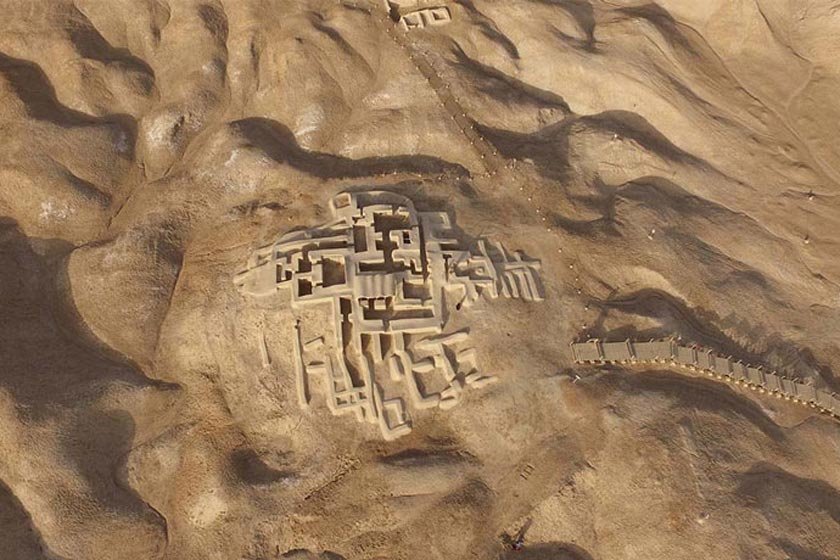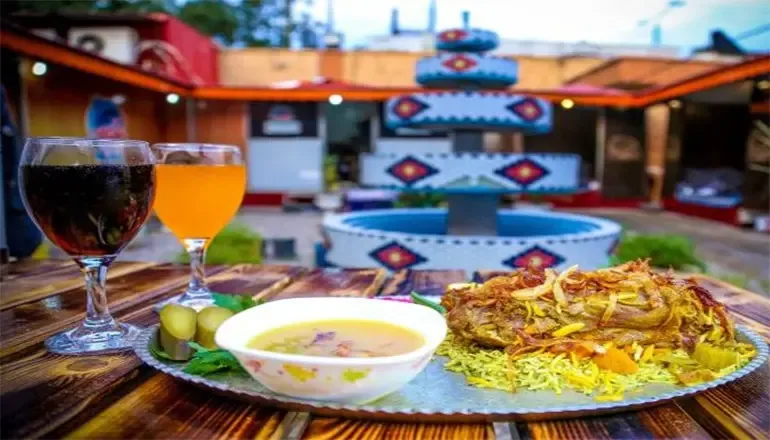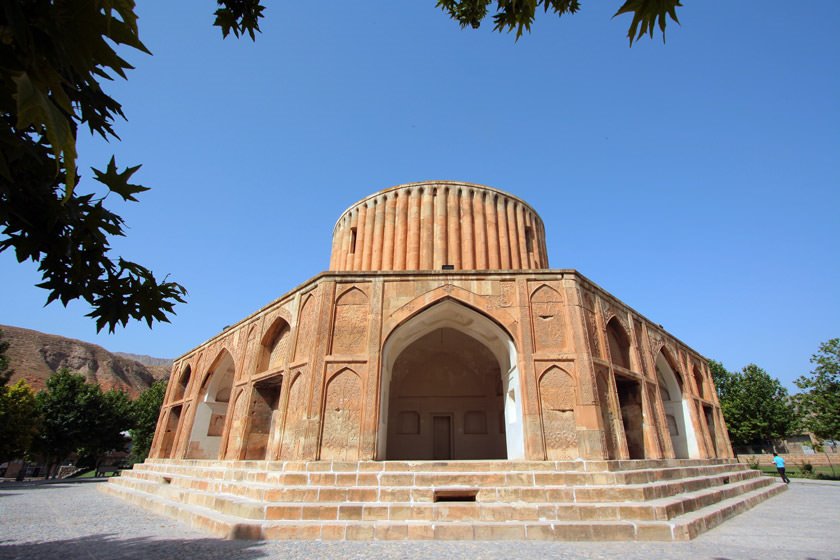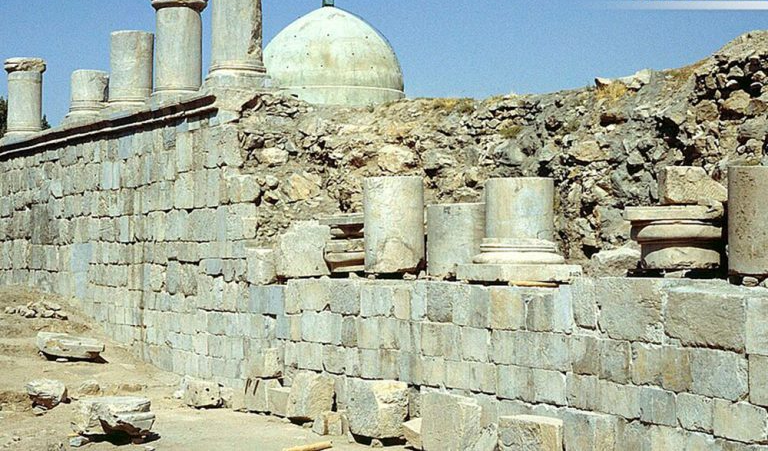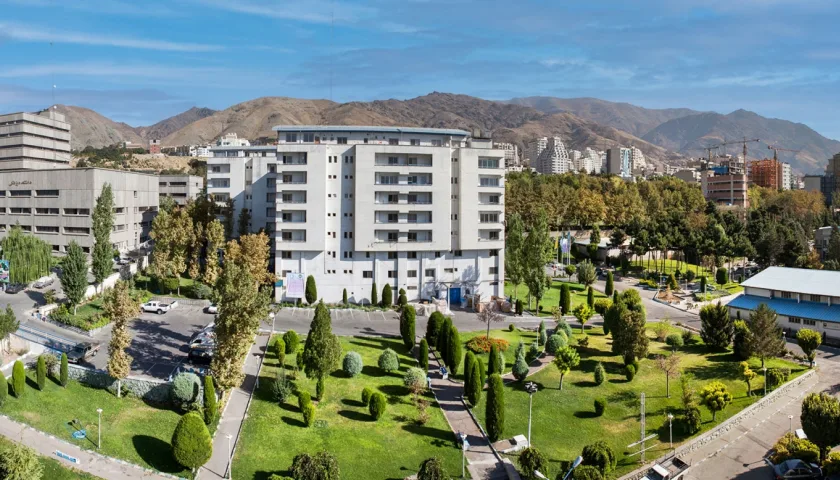Sokhte City of Zabul : Sistan and Baluchestan Wonders
Sokhte City, based on archaeological findings, is considered one of the oldest civilizations in the world and among the ancient cities of Iran. This city, owing to its prominent historical features and the abundance of excavated artifacts, stands as a valuable region for archaeologists and history enthusiasts. As you embark on a journey to Sokhte City, you step into a vast and desert museum, each corner of which harbors a hidden treasure.
In the expansive region of Sokhte City, numerous historical attractions catch the eye. However, despite the high significance of this city, it can be said that Sokhte has been somewhat neglected among other tourist attractions in Iran. The hot and dry climate, the Sistan and Baluchestan region’s climatic conditions, and the lack of recreational facilities in this area are among the reasons why travelers have not paid sufficient attention to Sokhte City. In this article, we delve into introducing Sokhte City, examining its secrets and features, and providing relevant information about accessing the city, the best time to travel, and accommodations in the vicinity of Sokhte City. Join us with Gulf City Pedia to discover more.
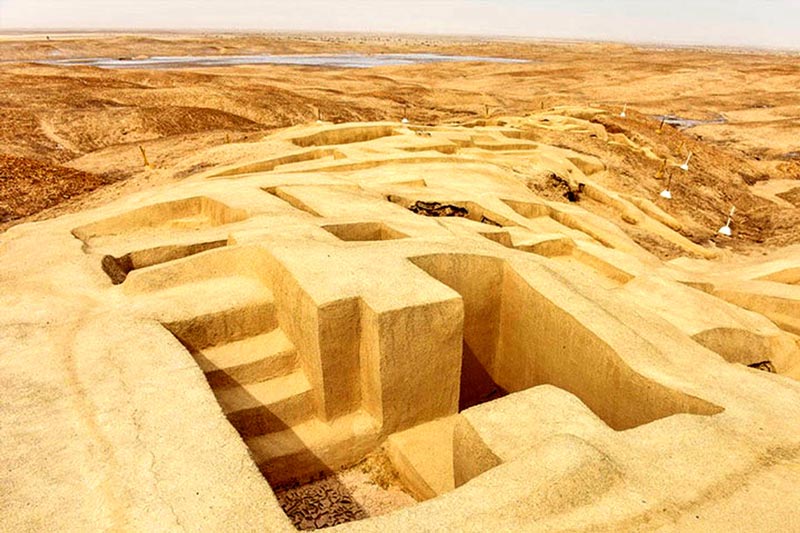
Introduction and Original Name of Sokhte City
Sokhte City is considered one of the notable attractions in Zabul and is located in the Sistan and Baluchestan Province at the easternmost tip of the country. This archaeological region has played a crucial role in the past as a crossroads connecting the Indian subcontinent and Central Asia with the civilizations on the periphery of the Persian Gulf. In essence, Sokhte City encompasses a significant part of ancient Iranian civilization and the cultural roots of the eastern Iranian plateau, representing a central hub in ancient urbanization.
Sokhte City has been one of the largest ancient cities in Iran and a key civilization in the eastern Iranian plateau. It provides comprehensive insights into the culture, economy, and society of ancient Iran in the Sistan region. Archaeological studies in Sokhte City and extensive research by historians in the area reveal remarkable developments in various fields such as domestic trade, foreign commerce, urbanization and architecture, medicine, arts, agriculture, zoology, geology, and all related sciences.
With a history dating back 5,000 years, Sokhte City was an advanced center of ancient Iran, boasting diverse arts and flourishing industries. It is referred to by other names such as the “City of Art” due to the discovery of prominent artistic artifacts and handicrafts, and the “City of Science” for its outstanding scientific findings, especially in the field of medical science. One of the most intriguing aspects of Sokhte City is the absence of defensive walls and military fortifications, unlike its neighboring cities. Sokhte City did not have gates, indicating a level of interaction with surrounding cities. The absence of military weapons among the discovered artifacts further supports the notion, earning Sokhte City the title of the “City of Peace.”
The valuable artifacts unearthed in Sokhte City span a variety of arts, including pottery, engraving, jewelry making, and weaving. Since 1967, approximately 53 years ago, English and Italian archaeologists initiated excavation and exploration activities in the Sokhte City area. After a long hiatus following the revolution, archaeological excavations resumed in 1995 under the supervision of Iranian scholars, led by Dr. Seyed Mansour Sajjadi. Currently, Sokhte City is a prominent subject of study among researchers, with its extensive research potential continually unfolding.
The ancient region of Sokhte City on the plains of Sistan.
In recent years, alongside Iranian and Italian archaeologists and prominent historians, a group of medical graduates has also engaged in research within the Sokhte City area, exploring ancient diseases of the old Sistan region during various excavation seasons.
In discovered Sumerian civilization tablets, the names of residence cities of these tribes are mentioned. In this list, a city named “Erteh” stands out, which might possibly be identified as Sokhte City based on descriptions available about it. Some archaeologists consider Erteh as the original name of Sokhte City, but there is no definitive answer in this regard. Research into the ethnicity of Sokhte City’s inhabitants is confidential, and there is currently no conclusion on this matter. The theory connecting Sokhte City with extraterrestrial beings has been of interest to some archaeologists due to the unknown ethnicity of the people in this ancient land and the discovery of large skeletons and unfamiliar artifacts in past years. However, there is no scientific evidence supporting this claim.

The name “Sokhte City” was given to this region approximately 150 years ago due to the discovery of burnt remains in a rectangular structure with an approximate area of 500 square meters. In this structure, corridors, staircases, and thick adobe walls with a height of three meters have been found, bearing evidence of burnt beams and human skeletons. The name “Sokhte City” was first introduced in English by archaeologist Earl Steinholt.
In 2014, Sokhte City was registered as the first historical hill in Iran and the seventeenth global heritage of Iran in the UNESCO World Heritage List.
History of Sokhte City
The history of Sokhte City dates back over 5,000 years, placing it on par with the civilizations of Jiroft and the Bronze Age. Different periods of urbanization in this ancient city have been examined within the time frame of 3,200 to 1,800 years before the Common Era. Based on the discovered evidence, the life of Sokhte City is divided into four periods, including the foundation of the city, growth and prosperity, the onset of decline, and the period of the city’s destruction.
The area of Sokhte City in the past was approximately 280 hectares and was divided into five main sections, including residential areas in the northeast and east, extensive central regions, an industrial section in the northwest, and commemorative structures and cemeteries in the southwest of the area. The industrial section was located outside the city and at a distance from residential areas.
The peak period of Sokhte City’s prosperity lasted for about 300 years, between 2,500 and 2,200 years before the Common Era, during which ancient people lived in this region for approximately 1,400 years. Unlike the current climate of the Sokhte City area, in the past, the city was lush, water-rich, and the main occupations of its people were agriculture and industry. The construction of the city near the marshes at the confluence of the Hirmand River transformed the lands of this region into fertile areas for agriculture, and the presence of natural elements such as the Hirmand River, Hirmand Lake, and Khwajou Mountain around Sokhte City added to the popularity of this region.
The use of camels for transportation and the utilization of their products first occurred in Sokhte City. Among the most significant discoveries in Sokhte City are numerous courtyards, corridors, storerooms, rooms, furnaces, stairs, and other architectural spaces. Among the discovered artifacts, thousands of pottery pieces and decorative objects can be counted. Other prevalent industries in Sokhte City included rug weaving, engraving, marquetry, pottery, and the production of metal tools. Sokhte City is the only archaeological site in the country where archaeological activities and excavations have continued uninterrupted.
Where is Sokhte City?
Sokhte City is located in the Sistan and Baluchestan Province, approximately 50 kilometers south of Zabul . Situated in high hills with elevations ranging from 12 to 18 kilometers between the Hamoun and Hirmand Rivers, it is located between the Hirmand and Hamoun rivers. Sokhte City is now positioned at the easternmost tip of Iran and a short distance from the Iran-Afghanistan border, approximately 170 kilometers from Zahedan. The distance from Sokhte City to Zahedan Airport is 60 kilometers, taking around 50 minutes to travel this route. Zabul Airport offers flights to Tehran and Mashhad. Considering the long distance from Sokhte City to Tehran and other parts of the country, the best way to reach this region is through direct and indirect air travel.
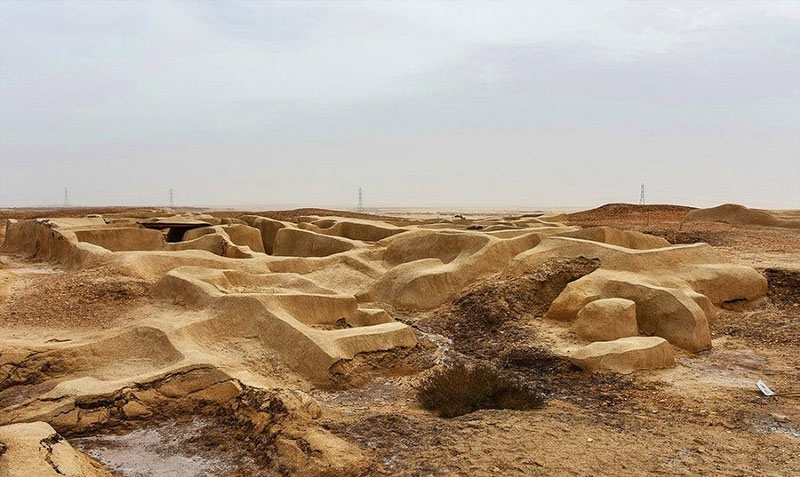
The distance from Tehran to Sokhte City is approximately 1,500 kilometers. To cover this distance, you need to head towards Shahroud first and then continue towards Sabzevar. Proceeding south, passing through cities such as Gonabad and Birjand, turn left in Nehbandan. From Nehbandan, it is about 170 kilometers to Zabul . Sokhte City is located 50 kilometers south of Zabul .
Another route from Tehran to Sokhte City is through the Qom road, passing through cities like Kashan, Yazd, and Kerman. From Kerman, head to Nehbandan and proceed to Zabul as before. This route is slightly longer than the previous one.
If you are staying in other cities, depending on your location, you can travel to one of the cities such as Zabul , Kerman, or Birjand and then continue towards Zabul and Sokhte City.
Museum of Sokhte City
During your visit to Sokhte City, you can also explore the Museum of Sokhte City. This museum displays a significant portion of tools and artifacts discovered from the archaeological site of Sokhte City and other civilizations in the provinces of South Khorasan, Kerman, and Sistan and Baluchestan. Among these artifacts are pottery and stone objects, figurines, beads, reconstructed examples of discovered graves in Sokhte City, and more. The museum consists of administrative and library sections, a research section, an amphitheater hall, a reception hall, and sanitary facilities. The Museum of Sokhte City is located opposite the archaeological site of Sokhte City on the road from Zabul to Zahedan.
Address of Sokhte City: Sistan and Baluchestan Province, Zabul City, 50 kilometers on the road from Zabul to Zahedan, on the left side
Address of the Museum of Sokhte City: Opposite the archaeological site of Sokhte City
Visiting hours for the Museum of Sokhte City: 8 am to 12 pm and 4 pm to 8 pm in the first six months of the year, 8 am to 12 pm and 4 pm to 7 pm in the second six months of the year
Why Did Sokhte City Burn?
The most important question for archaeologists in the study of this area was why Sokhte City burned? Did this city really burn? In this regard, archaeologists have various theories. In initial investigations, a group of foreign archaeologists gave the name “Burnt City” to this city due to the presence of extensive layers of ash in this area and the observation of signs of burning in the structures. According to some researchers, Sokhte City burned twice: once during the period of growth and prosperity and the second time during the city’s destruction. However, there are differing opinions on this matter, and some researchers reject this theory.
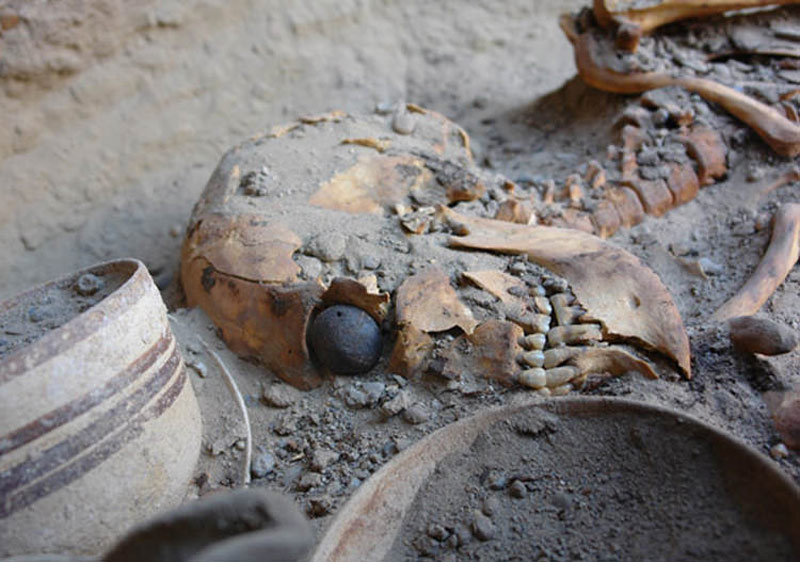
Today, archaeologists believe that the ash mound over Sokhte City was due to industrial activities in the surrounding areas, and the burning of the city was not the cause of its destruction. Some experts consider the effects of drought and the depletion of water sources as the reason for the gradual reduction of livestock and agricultural products, leading to the use of the remains of the city for firewood and cooking, ultimately resulting in their disappearance and the complete destruction of Sokhte City. In this theory proposed by Mehdi Mortezaei, a professor of archaeology at the University of Sistan and Baluchestan, and a member of the faculty of this university, it is suggested that there was no burning in Sokhte City.
Today, scholars believe that due to the industrial activities and the existence of industrial zones around Sokhte City in the past, the ash mound covering the city was a result of the activities of these areas. Climate changes and the decline of industry and trade are considered the main reasons for the decline of Sokhte City.
Secrets and Most Famous Discoveries of Sokhte City
During the investigations carried out in Sokhte City, evidence was found that astonished archaeologists. These pieces of evidence indicate advances in medical science in the past in Sokhte City. In 1356, in the excavations of Sokhte City, a mass grave was discovered. Among the skeletons found in it, a skull was found that showed traces of surgery. This skeleton belonged to a 13-year-old girl, and a deep triangular incision was visible on the right side of her skull. Historians believe that this surgery was the first brain surgery in ancient times. Although the patient died a few months after this surgery, this skull is considered one of the most important archaeological discoveries in the world.
Sokhte City and the Artificial Eye
Among the medical findings in Sokhte City, there is mention of an artificial eye discovered in the cemetery of the city. The material of this artificial eye is a combination of natural bitumen and a type of animal fat, featuring designs resembling eye iris made of fine golden wires. Today, the artificial eye from Sokhte City is preserved in a museum in the southeast of Zabul .
In Sokhte City, a skeleton with an artificial eye has been found.
The artificial eye of Sokhte City was discovered in 1385 and belonged to the remains of a woman buried in Sokhte City. The woman’s age is estimated to be around 28 to 32 years, and alongside her bone remains, a leather frame for the artificial eye was also found. The grave and the discovered artificial eye date back to 2800 years before Christ.
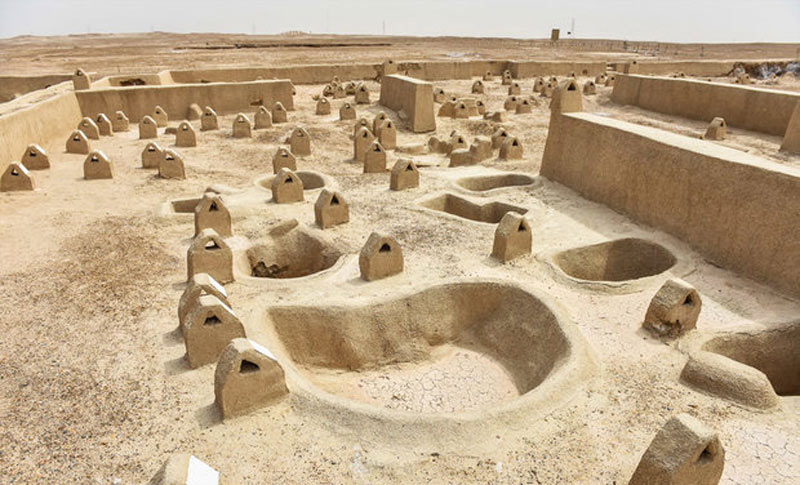
In 1394, after five years of effort, archaeologists and sculptors were able to reconstruct the skull of this woman with an artificial eye. The design of the head, eyes, and all intricate details such as skin color, hair, and nose shape were done through manual 3D design and multiple scans under the supervision of Negar Nadripour, marking the first such achievement in Iran.
Other Archaeological Discoveries in Sokhte City
Among the archaeological findings in Sokhte City is a cemetery with grave stones made of raw clay, discovered in 1972 entirely by chance. Differences in the structure of the graves, in terms of shape, size, and materials, reflect stratification, religious and ritualistic differences, and various religious beliefs of the people of that time. Alongside this cemetery, a vast collection of pottery, containers, and everyday items of the people of Sokhte City was also unearthed.
Among the ornamental objects, particularly noteworthy examples of ancient jewelry with precious metals like gold and gemstones such as carnelian, marble, lapis lazuli, and turquoise stand out, indicating the prosperity of the jewelry industry in Sokhte City. The majority of Sokhte City’s jewelry consists of necklaces adorned with various gemstones.
During archaeological excavations in Sokhte City, a straightedge made of ebony wood was also found. This ruler, 10 centimeters in length, measured with a precision of one millimeter. Although the concept of measurement in meters did not exist in ancient times, the precision of this ruler in Sokhte City is described in today’s terms.
Among the other items discovered in the historical cemetery of Sokhte City, a 5,000-year-old backgammon board with 60 pieces can be mentioned. Before the discovery of this artifact, the oldest backgammon board found in the world was in the Royal Cemetery of Ur in Mesopotamia. The wood of this backgammon board in Sokhte City is made of ebony, and on its rectangular surface, a snake image is intricately depicted. The pieces of this backgammon board are made of common stones of that time, such as lapis lazuli, carnelian, and turquoise.
In one of the 5,000-year-old graves of the cemetery of Sokhte City, archaeologists found a cup with the design of a goat next to a tree. By examining other vessels and objects discovered from this area, they noticed an interesting point. The goat’s image on the cup was repeated five times with minor variations. Following these patterns, the movement of the goat towards the tree and eating the leaves was revealed. By completing these images with the help of designers, archaeologists obtained a 20-second film. In this film, the goat’s movement towards the tree is clearly visible.
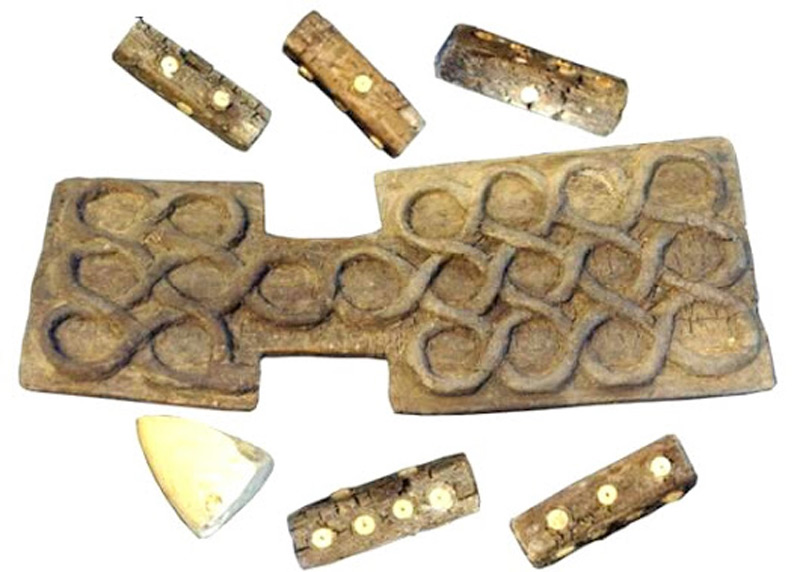
The wonders of Sokhte City are not limited to the mentioned cases, and the social life in this region during ancient times, as evidenced by historical findings, appears to have been remarkably modern. The water and sewage pipeline system in Sokhte City, using ceramic pipes, which still have remnants, is considered a manifestation of modern urbanization at that time. The carpet and textile industry also flourished in Sokhte City, and the woven fabrics from this region were unparalleled in the surrounding areas.
Among the other ancient objects discovered in this region, mention can be made of a ceramic jar with the potter’s signature, needles, hammers, pottery kilns, metal melting furnaces, buttons, comb handles, legumes and fruit seeds, rice, cumin, and many common daily items.
Best Time to Travel to Sokhte City
The area where Sokhte City is located is one of the least rainy regions in Iran. The climate in Sokhte City is hot and dry, and due to limited rainfall in this area, many wells in the vicinity have dried up. The air temperature in the coldest time of the year in this region does not drop below seven degrees Celsius in December. Summers in Sokhte City are very hot and scorching, with temperatures reaching over 45 degrees Celsius in July. The intensity of wind in Sokhte City and the surrounding Moon Hills is severe throughout the year and peaks in July, to the extent that sandstorms are a common phenomenon during this time.
This region has two seasons: cold and warm, with the cold season limited to three months in Azar, Dey, and Bahman. The other months of the year have warm weather in this region. The average temperature in the cold months is around 13 degrees Celsius, but nights are cold. In all seasons, the temperature difference between night and day in Sokhte City, Zabul , and the surrounding areas is significant.
Considering the provided information, it can be said that the best time to travel to Sokhte City and visit this ancient city is from early to mid-autumn. When visiting Sokhte City, due to the open space in this area, it is essential to use a hat and sunscreen.

Where to Stay in Sokhte City?
When traveling to Sokhte City, there are limited accommodation options. There is only one active hotel in Zabul city, called Aram Zabul Hotel, which was established in 1384 and is located in the center of Zabul . This hotel is approximately a 14-minute drive from Zabul to Sokhte City.
For those seeking a rural retreat, the Aramesh Cottage in Zahak city is about 50 kilometers away from Sokhte City, marking the first eco-lodge in Sistan and Baluchestan Province. Another option is Kianshah Eco-lodge in Adimi city, approximately 60 kilometers from Sokhte City, with a limited distance to Zabul and its attractions. Also, Manzelab Eco-lodge, located 15 kilometers from Zahedan, is the only accommodation in Zabul city in Sistan and Baluchestan Province and is 180 kilometers away from Sokhte City.
If you prefer staying in a completely pristine environment, rural houses with mud-brick facades are suitable choices. In these lodges, local guides provide suitable information for enthusiasts, and various handicrafts and historical sculptures are available for purchase. Surrounding these rural houses, there are numerous historical and archaeological attractions that can be explored alongside visiting Sokhte City.
On the opposite side of the Sokhte City Museum, there are pavilions and accommodation platforms with suitable facilities for staying overnight and resting. While you can relax in this area, considering the temperature difference between day and night in this region, without sufficient and appropriate equipment, the surrounding areas of Sokhte City may not be a good option for overnight stays.
Attractions Around Sokhte City
Sistan and Baluchestan Province hosts valuable historical attractions, all of which represent prominent points of ancient civilization. When traveling to Sokhte City, you can also visit other notable places in Sistan and Baluchestan Province.
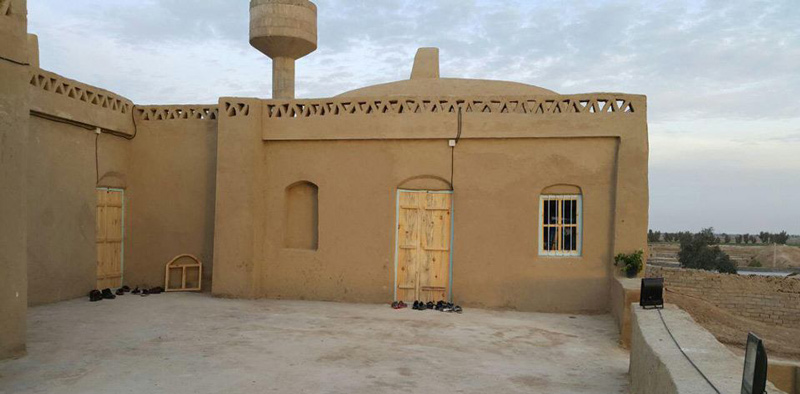
Rostam Castle in Zabol, located 22 kilometers southeast of Sokhte City, Asbadeh Hay Dares in seven kilometers south of this city, Khajeh Mountain and the mausoleum of Khajeh Gholtan in 57 kilometers northwest of Sokhte City, and Gholaman Estuary in 57 kilometers northeast of Sokhte City are among the most prominent historical attractions around Sokhte City.
Frequently Asked Questions
Where is Sokhte City?
Sokhte City is currently located in the easternmost part of Iran, a short distance from the Iran-Afghanistan border, approximately 170 kilometers from Zahedan. The distance between Sokhte City and Zahedan Airport is 60 kilometers, and it takes about 50 minutes to travel this route.
Why did Sokhte City burn?
Some experts attribute the gradual disappearance of livestock and agricultural products due to the effects of drought and the loss of water resources as the reason for the gradual decline of Sokhte City. Ultimately, people’s use of the remains of the city for obtaining fire and cooking led to the complete destruction of Sokhte City. Other experts believe that the presence of industrial zones around Sokhte City in the past covered the city with a layer of ash from the activities of these areas.
What is the story of the artificial eye in Sokhte City?
The artificial eye of Sokhte City was discovered in 1385 and belonged to the remains of a woman buried in Sokhte City. The woman’s age is estimated to be around 28 to 32 years, and alongside her bone remains, a leather frame for the artificial eye was also found. The grave and the discovered artificial eye date back to 2800 years before Christ.
What is the best time to travel to Sokhte City?
The best time to travel to Sokhte City and visit this ancient city is from early to mid-autumn.

